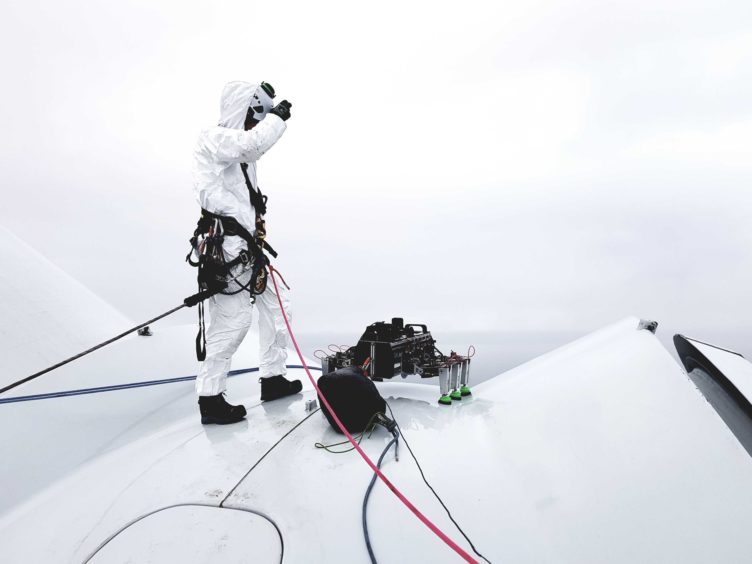
A “world first” has been achieved after a robot carried out a blade walk on an offshore wind turbine off the coast of Scotland.
The BladeBUG, which is being developed as part of a £1 million collaboration involving ORE Catapult, part funded by Innovate UK, is expected to deliver a 30% cost reduction on current blade inspection techniques.
For next generation turbines, that saving could increase to as much as 50%.
The blade walk was carried out over two days in October, with the six-legged inspect-and-repair robot scaling the 7 megawatt Levenmouth demonstration turbine off the Fife coast.
Reviews are currently carried out by technicians wearing harnesses and ropes, adding a “measurable” knock-on effect to the levelised cost of energy
Conditions at sea and faster tip speeds, which can lead to significant blade damage over time, have traditionally been a significant headache for offshore operators to contend with.
The BladeBUG project is due to run until the end of next year, at which point it’s claimed the robot will be capable of inspecting blade surfaces for emergent cracks and imperfections, transmitting data on their condition back to shore.
It has previously demonstrated its abilities on blade sections and the vertical training tower at ORE Catapult’s National Renewable Energy Centre in Blyth.
During the demonstration last month, the robot walked 50 metres on a vertically positioned blade on the Levenmouth turbine, the tip of which reaches 195 metres above the sea when upright.
For BladeBUG’s developers, the trial showed the reliability of its vacuum-padded feet, its ability to navigate the varying curvature of blade surfaces in a variety of scenarios and the reliable transmission of data from blade scans and live video feed to technicians.
Chris Hill, ORE Catapult’s operational performance director, said: “This is an incredibly significant technology that we know is being keenly watched by the industry as a potential game-changer.
“It has a clear potential for cutting costs, reducing human offshore deployment and increasing blade lifetimes. But, we had yet to see how the robot would perform on a real turbine out at sea. I consider BladeBUG’s first walk at Levenmouth as offshore wind’s ‘moon walk’ – a historic milestone in the industry’s evolution. Robotics are here to stay, and they will be an essential ingredient to operating ever-expanding wind farms, deeper-water sites and faster, bigger turbines in the coming years.”
Chris Cieslak, BladeBUG chief executive, said: “This is such a historic moment for us as a company. It has been so exciting to see results of months of work and development in action and this latest test marks the huge progress we have made.
“In a little over a year we have gone from designing and testing our first prototype, to taking our first tentative steps with our Mark I robot, to now, seeing the BladeBUG robot walk along the blade of an actual offshore wind turbine. We cannot wait to perform further trials and demonstrate the capabilities further offshore.”
Recommended for you

